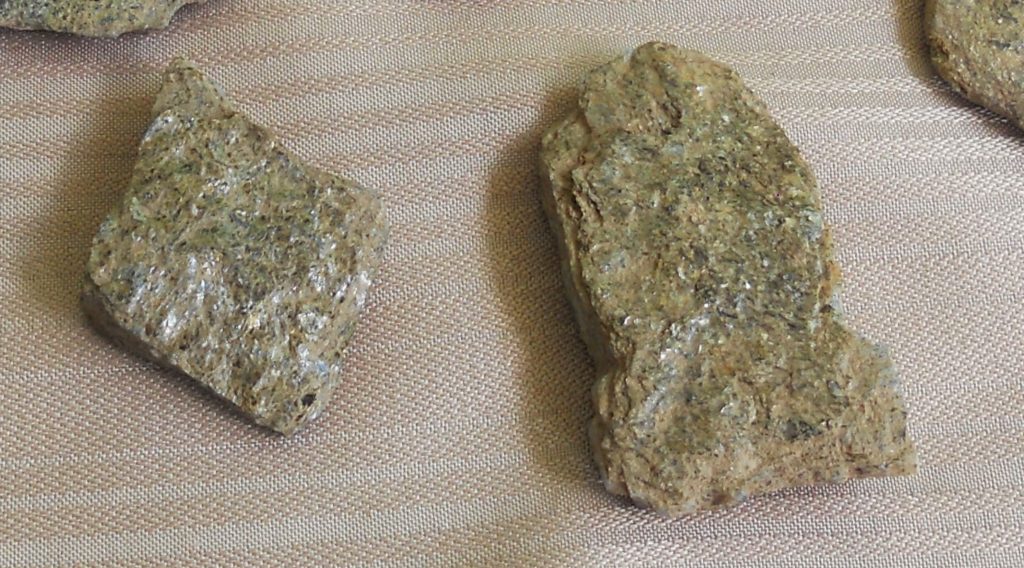NORTH AMERICANS WERE SOME OF THE EARLIEST METALWORKERS
If recent carbon dating methods are accurate, then North American natives were early metalworkers. In the Great Lakes Region, Archaic men were producing weapons and tools made from very pure copper as early as about 6500 BC. The copper was so pure that it did not require smelting. These early metalworkers hammered the copper into impressive tools. Although they were not forging their metal tools, they possibly heated the copper to make it more malleable, before hammering it into shape.
This culture which produced these copper tools is called the Old Copper Complex by archaeologists. There are pictures on the Internet of a wide array of tools and weapons which were produced by these Archaic era men. Some museums in the Great Lakes region have impressive collections of these copper tools and weapons which have been recovered for over a century.

POSSIBLE BARRIORS TO THEIR PROGRESS
So, what could have prevented these Native Americans from progressing into the Bronze Age? Tin was required, in order, to produce bronze tools which would have been stronger. There were no tin deposits in the Great Lakes region. Also, warring by ancient men could have prevented such progress. Innovations occur when people have the opportunity to be open to new ideas. When people are distracted with wars, they are concerned about their survival.
Like in other parts of the world, trade would have been required to bring both copper and tin together for metalworkers to produce bronze. In the south, these circumstances may have been able to be met. Yet, this still would have required trade. The natives were certainly trading in the Archaic period because I have found proof of that myself. I found chert flakes at a quarry site which produced quartz. An anthropologist made the observation that these flakes were proof of trading.
EARLY MEN WERE ATTRACTED TO METALLIC MINERALS IN ROCKS

My late son found a large debris field in our garden which he felt was from the Archaic Native Americans, who produced tools there. I began to pick up these pieces of quartz with layers of shiny, golden pyrite and phyrotite (pyrite which has a magnetic attraction) because my son seemed so convinced. We eventually found some attempted tools made from the material. Since boys were also quarrying at the site, it is possible that they made these. Someone, whether a boy or a man, was attracted to the metallic quality of the layered quartz. It appeared as if he had tried to construct tools from these rocks.
A desire for shiny metalic objects was probably the motive for early people’s efforts to make metal objects. I think that this attraction to metal could be in our DNA. There are actually some birds which are attracted to metalic objects, as well. Before metal tools were made, certainly men did not contemplate how these tools would be stronger, than their stone tools.
COULD SMELTING HAVE BEEN AN ACCIDENTAL DISCOVERY?
Probably, rocks which contained copper were being heated in a fire for some purpose when the metal began leaching out through heating. This could have been an accidental discovery which led to smelting to extract the appealing, shiny metal from the rocks. Smelting required a higher temperature, than a campfire produced. It was done in pit fires, maybe kilns, and with bellows by ancient people.
The idea of combining two metals to make them into a stronger metal was probably derived from man’s problem-solving aptitude. As men progressed in their metalworking in areas where both tin and copper were available through trade, they experimented. By combining both copper and tin, early metalworkers in other parts of the world were able to make bronze.
The early metalworkers melted both of these metals into a liquid state and then mixed the two metals together. This liquid mixture was poured into casts to produce bronze tools, weapons, and adornments. These technological advancements were for the purpose of constructing more durable tools and weapons. Better weapons were a legitimate advancement when the weapons were used for self-defense rather than for aggression!